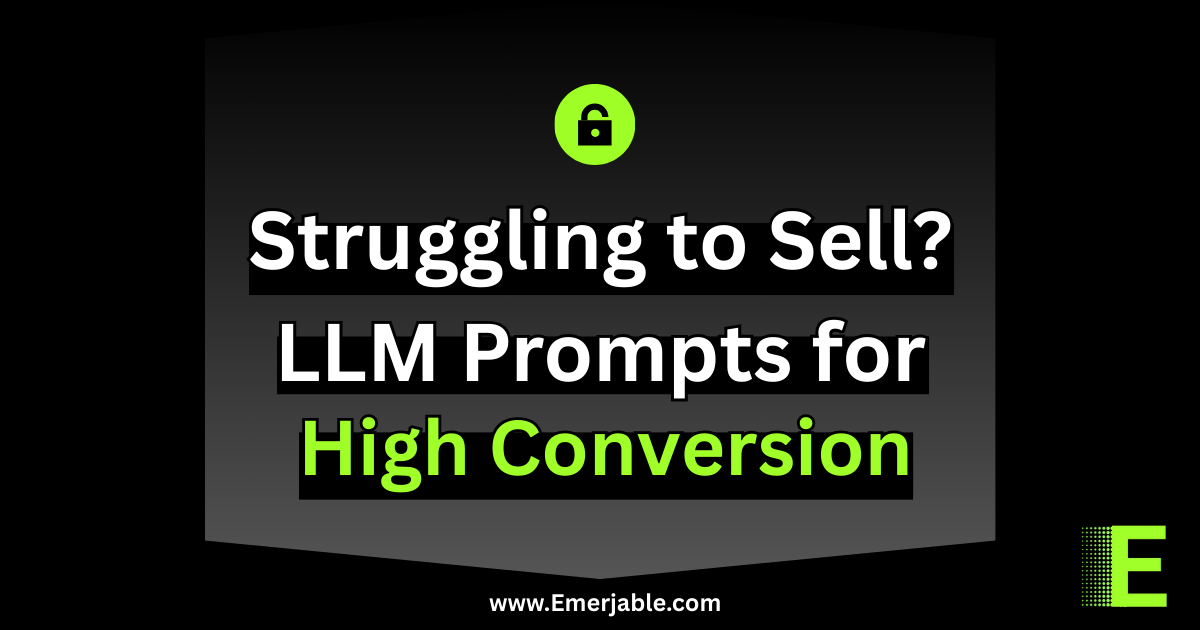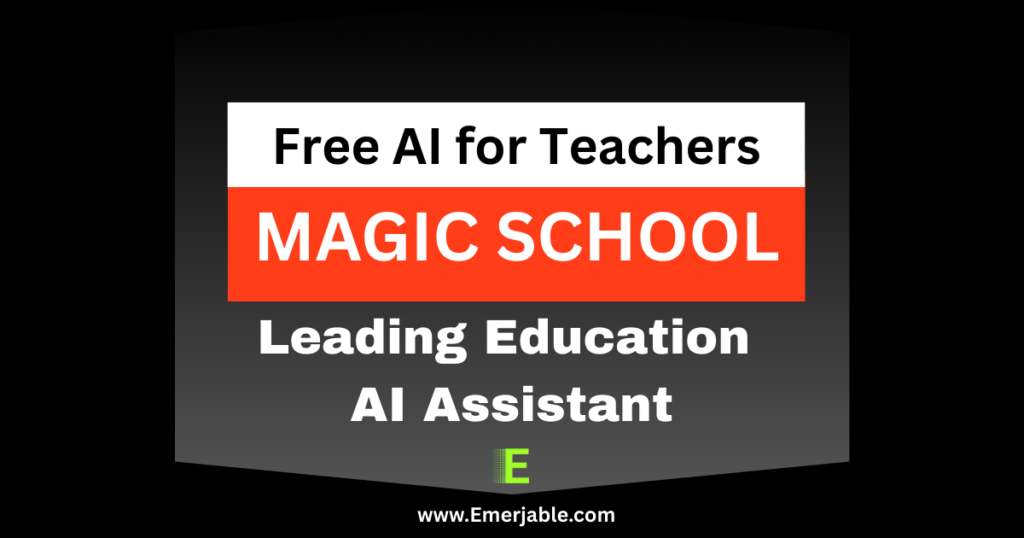In the fast-paced world of e-commerce, first impressions matter — and your product description is often your one shot to hook a potential buyer. Whether you’re running a Shopify store, managing listings on Amazon, or building your own DTC brand, compelling copy can make or break a sale. The good news? You don’t have to write every word manually. With Large Language Models (LLMs), you can generate high-converting product descriptions at scale — if you know how to prompt them correctly.
In this guide, we’ll explore how to use LLM prompts for product descriptions, walk through templates, and give you actionable strategies to drive more conversions using AI-powered e-commerce content.
🚀 Why Use AI for Product Descriptions?
Here’s what AI brings to the table:
- 🔥 Scalability: Create hundreds of product listings without sacrificing quality.
- 🧠 Consistency: Maintain tone and brand voice across your catalog.
- 🧪 A/B Testing Friendly: Rapidly test variations for different markets or personas.
- 💸 Conversion Boosting: Use psychological triggers and persuasive copy styles.
- ⏱ Time Savings: Focus on strategy, not repetitive writing.
But the real magic lies in how you prompt the AI to deliver the tone, structure, and persuasive power needed to convert browsers into buyers.
🧱 The Anatomy of a High-Converting Product Description
To craft strong prompts, you must understand what makes product copy sell. Here are the essential elements:
| Component | Purpose | Example |
|---|---|---|
| Headline/Hook | Captures attention | “Effortless Style Meets Everyday Comfort” |
| Feature List | Describes the product’s key capabilities | “Made from 100% organic cotton, machine washable, wrinkle-resistant” |
| Benefits | Shows what the user gains from the features | “Stay cool and confident, even on hot summer days.” |
| Use Case/Context | Helps customers visualize real-life usage | “Perfect for work-from-home days or casual weekend outings.” |
| Social Proof | Builds trust through testimonials or reviews | “Loved by 10,000+ happy customers worldwide.” |
| Call to Action | Encourages the next step | “Order now and get free shipping!” |
You can prompt LLMs to include some or all of these elements depending on your product and goals.
✨ Prompt Templates for AI Product Description Generation
Here are battle-tested prompts you can customize for different product types and goals:
🧥 Prompt 1: Simple Product Description (Apparel)
“Write a product description for a casual men’s t-shirt made from organic cotton. Emphasize comfort, sustainability, and minimalist style. Use a friendly and modern tone.”
🎧 Prompt 2: Feature-Focused (Electronics)
“Create a product description for Bluetooth noise-cancelling headphones. Include features like battery life, audio quality, and comfort. Write in a professional, tech-savvy voice.”
🛋️ Prompt 3: Lifestyle-Oriented (Home Goods)
“Write a cozy, emotionally appealing product description for a velvet throw blanket. Include imagery, benefits, and how it enhances a living space. Use a warm and inviting tone.”
💄 Prompt 4: Luxury Tone (Beauty Products)
“Craft a luxurious product description for a high-end anti-aging serum. Highlight premium ingredients, visible results, and prestige. Tone: elegant, confident, and aspirational.”
🛠️ Advanced Prompt Strategies for Better Conversions – LLM Prompts
Level up your LLM prompting with these techniques:
1. Target Buyer Personas
“Write a product description for a sleek laptop backpack, targeting young urban professionals who bike to work.”
This gives the AI a clear audience, which influences tone, benefits, and vocabulary.
2. Include SEO Keywords
“Write a 150-word product description for a women’s waterproof hiking boot. Include the keywords: waterproof hiking boots, trail shoes, women’s outdoor footwear.”
Use this to generate optimized listings for search visibility.
3. Inject Urgency or FOMO
“Add a line to this product description that encourages limited-time action or urgency (e.g., ‘Only a few left in stock!’).”
Triggers emotional drivers of purchase.
4. Prompt for Format
“Write this product description in bullet points, highlighting 5 benefits of the product.”
Bullet formats are great for mobile shoppers and marketplaces like Amazon.
5. Tone Variations for A/B Testing
Generate multiple tones for testing what resonates best:
- “Friendly and casual”
- “Authoritative and informative”
- “Playful and cheeky”
- “Minimal and modern”
Prompt:
“Write 3 tone variations of this product description: [paste description or product details].”
📈 Real Results: How Brands Use LLM Prompts for Sales Growth
- DTC Brands: Use AI to generate descriptions that reflect their brand tone across hundreds of SKUs
- Amazon Sellers: Generate optimized, bullet-style product copy with keyword integration
- Dropshippers: Automate product listing creation to test products faster with clean, conversion-focused copy
- Agencies: Offer AI-driven product description packages to clients for scale and consistency
⚠️ Common Mistakes to Avoid
| Mistake | Solution |
|---|---|
| ❌ Too generic | ✅ Include specific features, use cases, and tone |
| ❌ Keyword stuffing | ✅ Weave SEO naturally into benefits |
| ❌ Not tailoring by persona | ✅ Be clear who you’re speaking to (e.g., parents, travelers, athletes) |
| ❌ No CTA | ✅ End with action (“Buy now”, “Limited stock”) |
🧰 Tool Recommendations for LLM Product Description Generation
| Tool | Strengths |
|---|---|
| ChatGPT | Highly flexible, supports nuanced prompts |
| Jasper AI | E-commerce templates, tone control |
| Copy.ai | Fast generation, bulk product tools |
| Writesonic | Easy interface for product-focused content |
| Hypotenuse AI | Designed for ecommerce content at scale |
🛠️ Best AI Tools for Generating High-Converting Product Descriptions
1. ChatGPT (Pro / Plus / Enterprise)
- Best for: Custom prompts, flexible writing styles, advanced prompt engineering
- Key Features:
- Interactive and conversational generation
- Ability to tailor tone, audience, and length precisely
- Memory and file uploads for batch content work (ChatGPT Pro)
- Why it’s great: You can control every element with well-crafted prompts. Ideal for high-quality, nuanced content.
🧠 Best used with prompt templates like: “Write a persuasive product description for [product], targeting [audience], emphasizing [features/benefits].”
2. Jasper AI
- Best for: E-commerce teams and content marketers who need scale
- Key Features:
- Built-in Product Description template
- Brand tone settings
- Multi-language support
- Why it’s great: Easy to use with minimal setup; strong for branded content at scale.
✅ Perfect for Shopify, Amazon, and other retail CMS integrations.
3. Copy.ai
- Best for: Rapid content generation with templates
- Key Features:
- Dedicated product description generator
- Supports feature-to-benefit transformation
- Multiple tone and voice options
- Why it’s great: Fast and beginner-friendly with lots of output variations.
⚡ Great for solopreneurs and small business owners.
4. Writesonic
- Best for: Affordability and ease of use
- Key Features:
- E-commerce copywriting toolset
- SEO optimization options
- Bulk content generation
- Why it’s great: Simple interface, great for startups or rapid testing of product variants.
5. Hypotenuse AI
- Best for: E-commerce at scale
- Key Features:
- Built for bulk product content generation
- Upload CSVs or sync with product feeds
- AI-generated descriptions with consistent tone and brand voice
- Why it’s great: Tailor-made for large product catalogs, especially in fashion, furniture, or tech.
📦 Excellent for marketplaces, wholesalers, and DTC brands.
6. Copysmith
- Best for: Teams working on large-scale content operations
- Key Features:
- Integration with Shopify, Amazon, and WooCommerce
- Content versioning and collaboration
- Bulk generation with product import
- Why it’s great: Built for large e-commerce brands that need team-based workflows and integrations.
7. Zyro AI Content Generator
- Best for: Beginners or small stores using the Zyro website builder
- Key Features:
- Auto-generates product descriptions based on keywords and categories
- Simple and affordable
- Why it’s great: Lightweight and integrated with the Zyro ecosystem.
📊 Feature Comparison Snapshot
| Tool | Bulk Gen | SEO Focus | Templates | Tone Control | Integrations |
|---|---|---|---|---|---|
| ChatGPT | ✅ (manual or via API) | ✅ | ❌ (prompt-based) | ✅✅✅ | Via Zapier/API |
| Jasper AI | ✅ | ✅✅ | ✅✅ | ✅✅✅ | Shopify, SurferSEO |
| Copy.ai | ✅ | ✅ | ✅✅ | ✅✅ | Shopify, Zapier |
| Writesonic | ✅ | ✅ | ✅ | ✅ | Shopify, WordPress |
| Hypotenuse AI | ✅✅✅ | ✅✅✅ | ✅ | ✅✅✅ | CSV/Feeds, CMS APIs |
| Copysmith | ✅✅ | ✅✅ | ✅✅ | ✅✅ | Amazon, Shopify |
🧠 Bonus: How to Get the Best Results from These Tools
- Use detailed prompts: The more context (features, audience, tone), the better the output.
- Feed structured product info: Some tools let you upload CSVs or feeds for accuracy.
- Refine tone with samples: Some tools like Jasper let you “train” tone using example content.
- Test multiple outputs: Run A/B tests on tone, format (paragraph vs. bullets), and CTA variations.
🔍 Use Cases for AI-Generated Product Descriptions
🛍️ 1. Launching New Products Quickly
Use Case: You’re adding dozens (or hundreds) of new SKUs to your Shopify or WooCommerce store.
How AI Helps:
- Instantly generate descriptions using product names and features
- Ensure consistent tone and formatting across listings
- Speed up time-to-market by 5–10x
✅ Tool Suggestion: Jasper AI, Hypotenuse AI, or Writesonic with CSV upload
🌍 2. Translating and Localizing Content for Global Markets
Use Case: You’re expanding your product catalog into multiple languages (e.g., French, Spanish, German).
How AI Helps:
- Translate product descriptions while maintaining original tone and benefits
- Adapt messaging to local cultural and emotional triggers
- Generate region-specific variations with ease
✅ Tool Suggestion: ChatGPT (with tone prompts), Copy.ai (multi-language), Hypotenuse AI
📱 3. Creating Mobile-Optimized Product Listings
Use Case: Your customers primarily shop via mobile and skim content.
How AI Helps:
- Generate bullet-point summaries for quick scanning
- Highlight key features and benefits in snackable format
- Reduce bounce rates with clean, concise formatting
✅ Tool Suggestion: Writesonic, Copy.ai (bullet format prompts)
🔁 4. A/B Testing Variations for Conversions
Use Case: You want to test different versions of your product descriptions to see what converts best.
How AI Helps:
- Quickly generate multiple tones (e.g., playful vs. professional)
- Swap out benefits, hooks, or calls to action
- Analyze performance with integrated analytics tools (in some platforms)
✅ Tool Suggestion: ChatGPT (manual testing), Jasper AI (content variations), Copysmith
🧠 5. Turning Manufacturer Specs into Engaging Copy
Use Case: You sell tech gadgets or appliances and receive raw specs from suppliers.
How AI Helps:
- Turn dry specifications into benefit-focused, emotionally appealing content
- Simplify technical jargon for non-expert consumers
- Add storytelling elements to otherwise boring text
✅ Tool Suggestion: ChatGPT or Hypotenuse AI with structured prompt
💄 6. Generating Descriptions for Beauty or Fashion Products
Use Case: You need rich, descriptive, brand-aligned content for beauty, skincare, or apparel.
How AI Helps:
- Use sensory language to evoke emotional appeal
- Align tone with your brand’s aesthetic (e.g., luxurious, eco-friendly, playful)
- Create storytelling-style copy that connects with buyers
✅ Tool Suggestion: Jasper AI, Copy.ai (beauty/fashion templates)
📈 7. Optimizing Existing Descriptions for SEO
Use Case: You want to improve your current listings with better keyword targeting.
How AI Helps:
- Inject high-performing keywords naturally into descriptions
- Generate meta descriptions and alt-text alongside product copy
- Improve Google and marketplace search visibility
✅ Tool Suggestion: Writesonic (SEO mode), Jasper + SurferSEO integration
🧺 8. Bulk Generation for Marketplace Sellers (Amazon, Etsy, Walmart)
Use Case: You need to upload hundreds of product listings quickly with optimized, marketplace-compliant content.
How AI Helps:
- Auto-format product descriptions to match marketplace requirements
- Generate bullet points, titles, and meta content in one go
- Maintain quality while scaling fast
✅ Tool Suggestion: Hypotenuse AI, Copysmith, ChatGPT with batch prompts
💡 Bonus Use Case: Repurposing Product Descriptions into Marketing Content
How AI Helps:
- Turn descriptions into short ads for Google or Meta
- Repurpose bullet points into social media captions
- Generate email snippets based on product highlights
✅ Tool Suggestion: Jasper AI, ChatGPT, Writesonic
🎯 Final Thoughts: Prompt Like a Pro, Convert Like a Boss
The future of product content creation is AI-assisted — but your prompt is the lever that drives quality and results. When you combine smart prompt engineering with marketing psychology, you’ll produce descriptions that don’t just describe — they sell.
Whether you’re building your first dropshipping store or scaling a multi-brand catalog, mastering LLM prompts for product descriptions can help you write better, faster, and convert more.
Want to Go Deeper?
Explore more on:
- The Ultimate Guide to LLM Prompting
- What Exactly Are AI Prompts? A Simple Explanation for Everyone
- Understanding the Basic Structure of Effective LLM Prompts
- LLM Prompts for Beginners: Your First Steps to AI Text Generation
- The Secret to Writing Effective LLM Prompts for Engaging Blog Posts
- Boost Your Social Media: Proven LLM Prompts for High-Impact Content
- Crafting Compelling Emails with AI: Effective LLM Prompt Strategies
- Unleash Your Creativity: Mastering LLM Prompts for Story Writing



